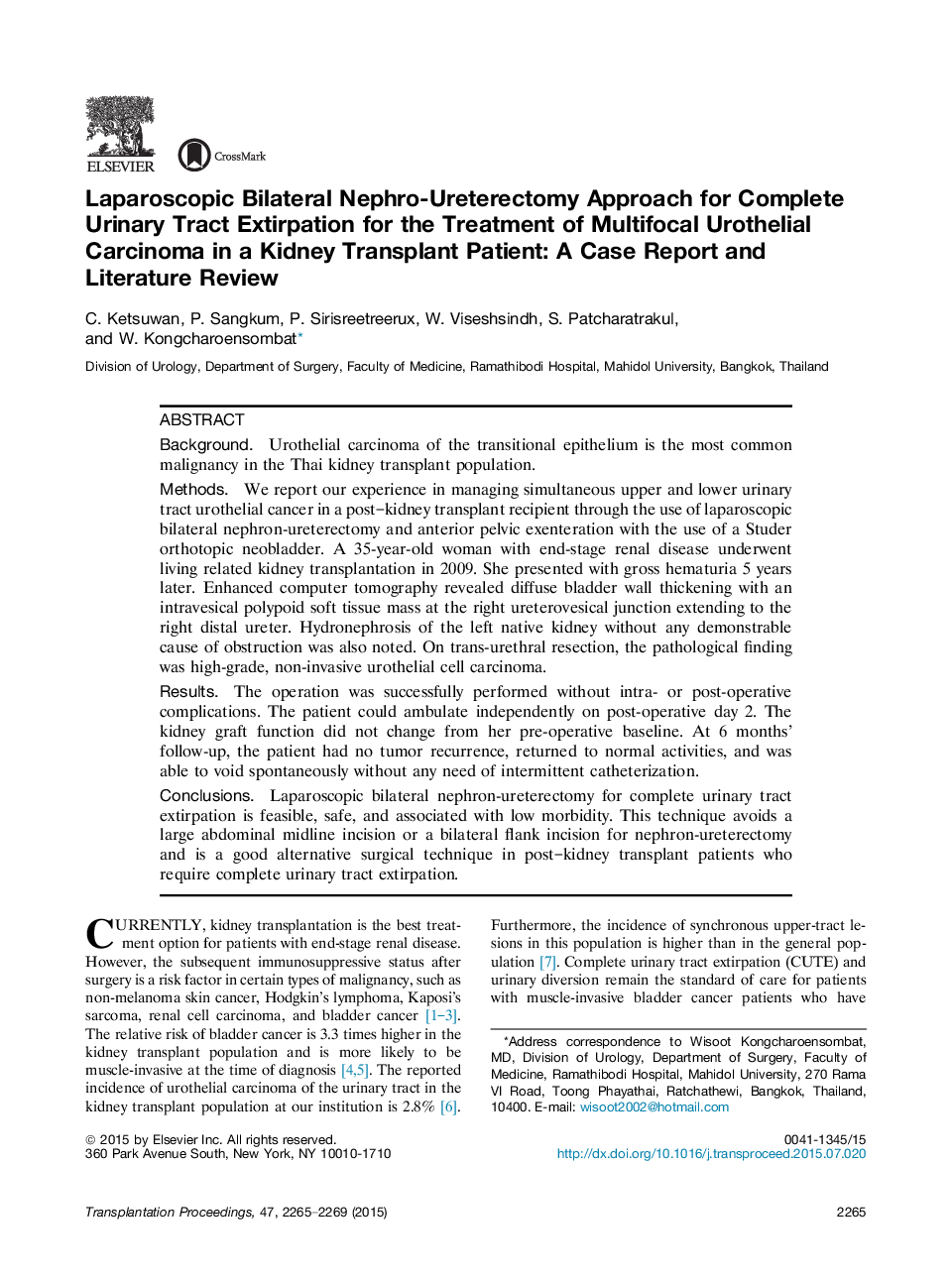| Article ID | Journal | Published Year | Pages | File Type |
|---|---|---|---|---|
| 6246842 | Transplantation Proceedings | 2015 | 5 Pages |
â¢This surgical technique is feasible, safe, and associated with low morbidity.â¢This technique is a good option for the patients who require CUTE.â¢This is the first case report of this technique in a kidney transplant patient.
BackgroundUrothelial carcinoma of the transitional epithelium is the most common malignancy in the Thai kidney transplant population.MethodsWe report our experience in managing simultaneous upper and lower urinary tract urothelial cancer in a post-kidney transplant recipient through the use of laparoscopic bilateral nephron-ureterectomy and anterior pelvic exenteration with the use of a Studer orthotopic neobladder. A 35-year-old woman with end-stage renal disease underwent living related kidney transplantation in 2009. She presented with gross hematuria 5 years later. Enhanced computer tomography revealed diffuse bladder wall thickening with an intravesical polypoid soft tissue mass at the right ureterovesical junction extending to the right distal ureter. Hydronephrosis of the left native kidney without any demonstrable cause of obstruction was also noted. On trans-urethral resection, the pathological finding was high-grade, non-invasive urothelial cell carcinoma.ResultsThe operation was successfully performed without intra- or post-operative complications. The patient could ambulate independently on post-operative day 2. The kidney graft function did not change from her pre-operative baseline. At 6 months' follow-up, the patient had no tumor recurrence, returned to normal activities, and was able to void spontaneously without any need of intermittent catheterization.ConclusionsLaparoscopic bilateral nephron-ureterectomy for complete urinary tract extirpation is feasible, safe, and associated with low morbidity. This technique avoids a large abdominal midline incision or a bilateral flank incision for nephron-ureterectomy and is a good alternative surgical technique in post-kidney transplant patients who require complete urinary tract extirpation.
